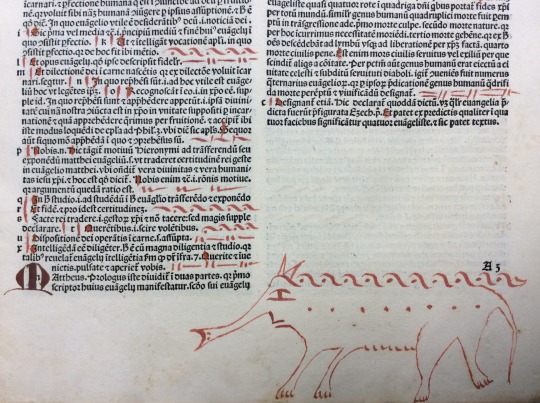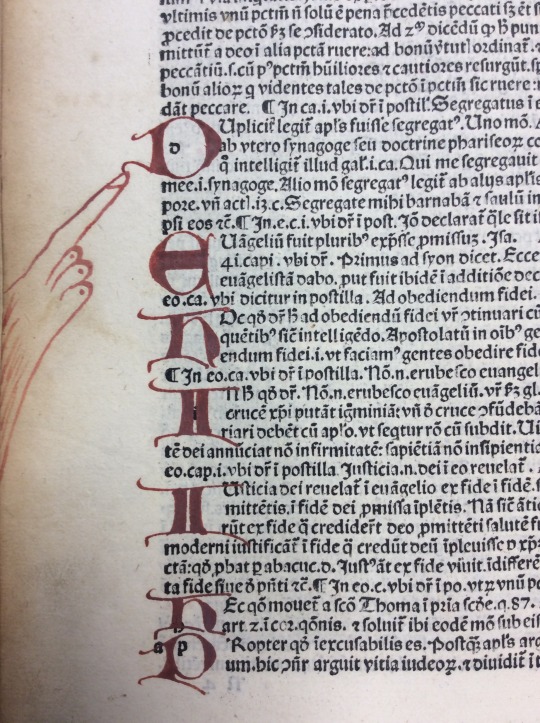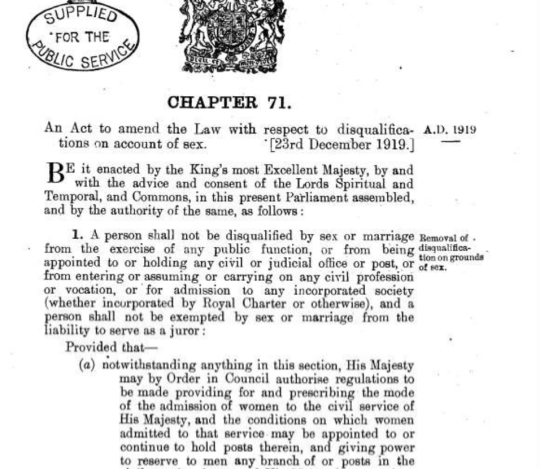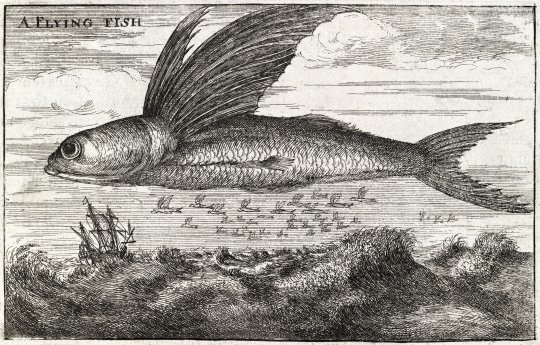#MTlibrary
Explore tagged Tumblr posts
Text
Middle Temple Library's Past Exhibitions: Dickens' Legal World

Painting of Charles Dickens by William Powell Frith (1859). The original is held at the Victoria and Albert Museum, London.
In 2021, Middle Temple Library hosted an exhibition on one of the Inn's most famous past members: Charles Dickens’ Legal World.
Originally intended to coincide with the 150th anniversary of Charles Dickens’ death in 2020, the exhibition was rescheduled for 2021 due to the library’s closure during the Coronavirus pandemic.
The exhibition focuses on Dickens’ employment and engagements in the legal world, including his admission to The Honourable Society of the Middle Temple in 1839 as a student.
Charles Dickens worked as a clerk and court reporter during a period of legal reform in the early Victorian era. His experience shaped some of his most famous works including The Pickwick Papers, Bleak House and Nicholas Nickleby. The Inns of Court are featured locations and the legal professionals he encountered inspired characters throughout his novels.

Illustration from Bleak House by Charles Dickens (1852-1854). Illustration by H. K. Browne
If you were unable to see the exhibition in person you can also enjoy this online presentation. These short films were created to demonstrate Dickens’ connections to the legal world and highlight some of his writings.
#library#law library#mtlibrary#inns of court#history#libraries#books & libraries#london#charles dickens#dickens#dickensian#bleak house#victorian era#victorian#nicholas nickleby#pickwick papers#exhibition#library exhibitions#victorian london#legal history#victorian england#1800s
29 notes
·
View notes
Text

This handsome fellow, drawn in red ink, is an example of a ‘drôlerie’, and is found in the Library’s copy Biblia Latina, printed in Venice in 1489. This was originally a four volume Bible, but our copy only includes this, the fourth volume. The book has a large number of red ink doodles (see below), as well as contemporary marginal notes. Drolleries such as this are commonly found in medieval manuscripts, and incunabula, books printed in the 15th century. They are often grotesque and bizarre figures.
Renae Satterley
Librarian





#library#law library#mtlibrary#inns of court#history#rare books#libraries#books & libraries#london#rare book#drôlerie#incunabula#marginalia
92 notes
·
View notes
Text
Middle Temple Library Exhibition: A Gentleman's Library









It was common for a learned gentleman to amass a private library consisting of thousands of volumes in the 16th and 17th centuries. Works on theology would have a dominant presence in these personal collections, but texts on history, literature, classics and the natural world would also be prevalent. Anyone engaging in society would accumulate material not only reflecting their professional life, but also the contemporary issues and discussions of the time. Although women were not excluded from education, men were more likely employed in professional fields, such as law, medicine and theology, which required access to books. This exhibition displays some of Middle Temple Library’s rare books, including those donated from such private collections, visualising what a gentleman’s bookshelf looked like in these earlier centuries. The exhibition has been divided into subjects
#library#mtlibrary#law library#inns of court#history#rare books#libraries#books & libraries#london#rarebook#rarebooks
38 notes
·
View notes
Text

This 16th-century artwork is of a 'haut', which are said to live in the trees. It has been identified with species of three-toed sloths such as Bradypus variegatus which are found in the forests of Central and South America. This artwork comes from 'Cosmographie universelle' (1575) by the French explorer and writer Andre Thevet (1516-1590). The book describes the history and geography of the lands in which Thevet had travelled. The two volumes contain over 1000 pages divided into 23 books. This woodcut is from chapter XIII of book XXI.
#library#law library#libraries#rare books#history#books & libraries#rarebook#london#mtlibrary#inns of court#sloth#south america#16th century#early printed books#explorer#nature#animals#wildlife#1500s#artwork
375 notes
·
View notes
Text
Provenance mysteries: Los treynta libros de la Monarchia Ecclesiastica o Historia Vniuersal del mundo

Censorship on A4r
The May 2025 provenance mystery features Juan de Pineda (approximately 1521-1599), Los treynta libros de la Monarchia Ecclesiastica o Historia Vniuersal del mundo, printed in Salamanca by Juan Fernandez, and published by Hilario de Bonefant, in 1588. Although originally issued as a five volume set, the Library holds volume one only.
Juan de Pineda (not to be confused with the Jesuit of the same name, 1558-1637) was a Franciscan monk, who was born in Medina del Campo, after which he moved to Salamanca, and attended the university there. By 1545 he was located in Zamora, and after 1560 in Valladolid. The author of this biographical entry states that he travelled extensively through Spain and visited numerous libraries, where he consulted works that informed his Monarchia Ecclesiastica, in which we cited over a thousand authors. It took him twenty years to complete the book.
There is one provenance mystery in this book, and one more generalised mystery. The latter concerns the censorship that has taken place on folio A4r. This has all the appearance of Spanish inquisitorial censorship (see for example a 2023 exhibition at the Biblioteca Nacional de España https://www.bne.es/es/agenda/malos-libros-censura-espana-moderna). But none of the digitised copies available to view online reflect this censorship (see for example https://archive.org/details/AFD02411/page/n55/mode/2up?view=theater, or: https://books.google.co.uk/books?id=OCRj8_-K3SEC&pg=PA4#v=onepage&q&f=false). I consulted with Barry Taylor, Curator of Hispanic Printed Collections at the British Library who confirmed that it did resemble inquisitorial censorship, but could not find the book listed in the expurgatory indexes of 1612 to 1667. The censored passage states that God loves his church more than he does his Mother (quoting the Fathers).
The provenance mystery concerns the inscription found at the end of the volume: Jeronymo Anriquez(?) Again, with thanks to Barry Taylor for the potential reading of the surname. First, is ‘Anriquez’ correct, and second, does this inscription refer to a previous owner, or to a censor? There are no entries for this possible name, or variations thereof, in the Virtual Authority File.

2. Inscription
The book also shows what Adam Smyth has referred to as ‘book marks’, that is, physical traces left behind in early modern books. In this instance, a fingerprint is clearly visible, possibly left behind by a clumsy printer’s assistant. Chemical analysis of the ink would be required to determine whether it was made by printer’s ink, or by pen ink.

3. Fingerprint
As ever, comments on these mysteries are welcome.
Renae Satterley
Head of the Library
May 2025
#library#law library#mtlibrary#inns of court#history#libraries#rare books#books & libraries#london#rarebook#censorship
13 notes
·
View notes
Text
Middle Temple Library's Past Exhibitions: Watchmen, Charlies, Peelers: The Story of Policing
Middle Temple Library's 2023 Summer exhibition looked at the history of policing in London.
The story of policing in London is a mutable and ever-changing one. The earliest recorded effort to establish a formal system of policing can be traced back to the reign of King Edward I in his statute of 1285: The Statute of Winchester (13 Edw. I, St. 2). The statute – often referred to as Watch and Ward – received royal ascent on 8th October 1285. It sought to consolidate the various enduring regulations of peace that had existed from the law of Edgar and Canute, through to William the Conqueror, Henry II and Richard I, and reform the system of the watchmen. The statute enforced the need for maintenance of peace in the City of London by outlining that inhabitants of every district must take it upon themselves to remain vigilant and challenge criminal behaviour. It enshrined that those committing the ‘many evils, as murders, robberies, and manslaughters’ must be taken by the keepers of the peace to a place of confinement and punished only if the offence if proved. This loosely mirrors the law and order system in our society today.
To read more, please see the online version of this exhibition.

The police, wearing Peel’s early uniform, contend with a mob at at Coldbath fields, 1833 from Griffiths, Arthur. Mysteries of police and crime. In three volumes. London: Cassell, 1901-1902.
#library#law library#mtlibrary#inns of court#history#libraries#rare books#books & libraries#london#rarebook#exhibition#library exhibitions#police#london history
16 notes
·
View notes
Text
Middle Temple Library's Past Exhibitions: Botany at Middle Temple

Middle Temple Library's autumn 2022 exhibition, Botany at the Middle Temple, which was curated in collaboration with The Linnean Society of London explored the fascinating topic of botany and plants at Middle Temple.
Plants provide the foundation for nearly all life on earth. The chloroplasts in green plants provide some 70% of our breathable oxygen and sit at the centre of countless ecosystems. By the same token, plants are essential to human life and civilization. Grains, pulses, fruits, and vegetables are staple foods around the world, and the calories from a single species of rice – Oryza sativa – sustain over 3.5 billion people. Plant fibres provide us with clothing, plant timbers provide us with building materials for shelter, and plant-derived compounds still provide the active ingredients in many of our most effective medicines.
Plants also provide the materials for some poisons, which have been used for centuries to commit heinous crimes. Ricin, for example, which is derived from castor beans, was used to poison the Bulgarian defector Georgi Markov in London in 1978. Even nicotine, found in nightshade plants (Solanaceae), can be a deadly neurotoxin when used in large quantities.
The Library’s Rare Book and Manuscript collections provide a wealth of materials to explore the fascinating topic of botany and plants – from sixteenth-century woodcuts illustrating medical botany, seventeenth-century tracts promoting food security, to murder trials. The Archive has a rich repository of documents that also tell the story of botany at the Inn, such as gardener’s bills and photographs. And, of course, the Inn has a beautiful garden with a rich and interesting past and present.
This exhibition linked materials from the Inn’s Archives, Rare Books, and Manuscript collections, combined with materials from the garden, to explore the splendid and diverse role that plants and botany play at the Inn. It was curated by Will Beharrell, Librarian at the Linnean Society, and Kate Jenrick and Renae Satterley, respectively Gardener and Librarian at Middle Temple, with the generous support of Victoria Hildreth, Assistant Archivist; Liane Owen, Book Conservator; and Siobhán Prendergast, Conservator.
To read more please see the online version of the exhibition.
#library#law library#mtlibrary#inns of court#history#libraries#rare books#books & libraries#london#rarebook#botany#botanical illustration#garden#Linnean Society#exhibition#library exhibitions
14 notes
·
View notes
Text

This incunabule (incunabulum) which was printed in Cologne in c. 1477, belonged to the collection of Robert Ashley (1565-1641). It is a biographical compendium of Church fathers and a history of the early Church. The printed initials are illustrated by hand with these comical figures. This mimics the way manuscripts were produced, a practice that continued beyond the advent of printing in circa 1450.
#library#law library#mtlibrary#inns of court#history#rare books#libraries#books & libraries#london#rarebook#incunabula#church history#drolleries#robert ashley
29 notes
·
View notes
Text







To celebrate the Summer Solstice this year, we held a special rare book viewing for our members. All of the books on display featured the people and monuments of Ancient Britain. We also displayed some mysterious stones which were discovered among with other larger examples when building work was done at the Inn in the 1980s!
#library#law library#mtlibrary#inns of court#history#libraries#rare books#books & libraries#london#rarebook#summer#summer solstice#ancient britain#druids#ancient history
18 notes
·
View notes
Text
Middle Temple Library's Past Exhibitions: Women in Law

Our Spring 2019 exhibition aimed to highlight women in the law by discussing the pioneers in the profession as well as ‘hidden’ women in professions associated with the law, displaying texts aimed at explaining the law in relation to women and legislative attempts to gain equal rights for women.

Sex Disqualification (Removal) Act of 1919
2019 marked the 100th anniversary of the passing of the Sex Disqualification (Removal) Act of 1919. The passing of this Act allowed women to become practising solicitors and barristers in an official capacity, and to join the Law Society and the Inns of Court: “a person shall not be disqualified by sex or marriage from the exercise of any public function, or from being appointed to or holding any civil or judicial office or post, or from entering or assuming or carrying on any civil profession or vocation, or for admission to any incorporated society (whether incorporated by Royal Charter or otherwise), and a person shall not be exempted by sex or marriage from the liability to serve as a juror”.

Image of Helena Normanton from The Women's Library at LSE Library
As a result of that legislation, the first woman to be called to the Bar on 10 May 1922 was Ivy Williams, a member of Inner Temple. Helena Normanton was Called to the Bar at Middle Temple in November 1922.
To read more please visit the online exhibition
#library#law library#mtlibrary#inns of court#history#libraries#rare books#books & libraries#london#rarebook#women in law#Helena Normanton#women's rights#legal history
12 notes
·
View notes
Text
Provenance mysteries: Las obras del maestro Fernan Perez de Oliva

Title page showing inscription in the gutter
The March 2025 provenance mystery focuses on Las obras del maestro Fernan Perez de Oliva, by Fernán Pérez de Oliva. The book was printed in Cordoba by Gabriel Ramos Bejarano. The printer originally started printing the work in Salamanca, before finishing it in Cordoba. This book is a collected volume of his works, including La tragedia: Hecuba Triste, Guadalquibir, and Dialogo en Latin y en Castellano amongst others.
Fernán Pérez de Oliva (1494?-1533) was born in Cordoba, and became rector at Salamanca, after studying in there and in Paris, and Rome. He is best known now as a Spanish humanist writer, and as a young man adapted classical comedies into Spanish. He later went on to write original works, or dialogues, of which the Diálogo de la dignidad del hombre is probably the most well-known, and was published posthumously. He ostensibly wrote a biography of Cristoforo Colombo, now lost, which was a source for Fernado Colon’s biography of his father, Historia del S.D. Fernando Colombo.

Folio 8 (signature B4r) with annotations
The provenance mystery concerns the marginalia found on folio 8 (signature B4r). Unfortunately the book was trimmed when it was (poorly) rebound in the 19th century, so some of the annotations are missing. This has also affected the inscription that can be seen on the title page, now obscured by the gutter, which may provide a clue as to the scribe of these annotations.

Folio 26 (signature D1v) with marginal markings
The book also has a lot of underlining, and use of marginal bracketing, possibly in the hand of Robert Ashley, the founder of the Library. But without further marginalia in his hand, it is difficult to determine definitively if this is his annotation.
The book is in need of restoration. If you are interested in sponsoring its repair, get in touch with the Library, and, as ever, if you have further comments on this provenance mystery please get in touch: [email protected].
Renae Satterley
Head of the Library
March 2025
#library#law library#mtlibrary#inns of court#history#libraries#rare books#books & libraries#london#rarebook#robert ashley#marginalia
16 notes
·
View notes
Text

This 17th century woodcut depicts a group of witches adoring the devil. The illustration comes from the Compendium Maleficarum (Collection of the Evil Deeds of Witchcraft) by Francesco Maria Guazzo. Guazzo was an Italian priest and exorcist from the order of Saint Barnaba and Saint Ambrose ad Nemus. This work which describes the practice and profession of witchcraft was first published in 1608.
#library#law library#mtlibrary#inns of court#libraries#rare books#history#books & libraries#london#rarebook#witches#witchcraft#halloween#spooky season#demonology
105 notes
·
View notes
Text

This 16th Century woodcut print of an bat was published in 'Histoire de la nature des oyseaux' by Pierre Belon (1555). Belon who was a naturalist, writer and diplomat wrote on a range of topics including botony, anatomy and Egyptology.
#library#law library#mtlibrary#inns of court#libraries#rare books#history#books & libraries#london#rarebook#halloween#early printed books#16th century#special collections
124 notes
·
View notes
Text
Provenance mysteries: Mr. William Shakespear’s comedies, histories, and tragedies

This edition’s provenance mystery features Mr. William Shakespear's comedies, histories, and tragedies, published in London in 1685. This edition of Shakespeare’s collected works is otherwise (better?) known as the ‘fourth folio’, and as can be seen here, includes the famous portrait of Shakespeare by Martin Droeshout. While the portrait that accompanied the ‘first folio’ (1623) appeared on the title page, in this edition it was included as a frontispiece.
The Library did not acquire this folio until the mid-nineteenth century. It first came into the collection between 1845 and 1862. The first listing of it in one of the Library’s catalogues is in 1862 (from a manuscript version of this 1863 catalogue: https://archive.org/details/cu31924021690510/page/550/mode/2up). Although the 1862/3 catalogue lists a first folio as being in the collection, this is in fact a reference to a nineteenth century facsimile of the first folio. We do not know how the Library acquired the fourth folio (whether through purchase or donation).
For some reason, when the book was rebound, or repaired in the twentieth century, one of the front end leaves was turned upside down, and glued to the title page. We know this because there is a price and code (probably a bookseller’s) pencilled onto it, in what was originally the upper right hand corner: ‘£5.5’. The code is difficult to decipher, but it is not a previous Library shelfmark. If the Library acquired the book through purchase, this could be the price it paid at the time for the book.

Another intriguing discovery was the presence of small pieces of cut-out paper, possibly wallpaper, found in the gutter of the book. One theory is that someone was cutting shapes out, perhaps using the book as a stand, and these pieces of paper fell into the gutter.

But the provenance mystery we are querying concerns the signature on the front end-leaf, which was only recently discovered. The book was in terrible condition, and has recently undergone restoration. As part of that process, the conservation studio realised that one of the front end-leaves had been glued down onto the frontispiece portrait. They were able to separate out the two leaves, revealing an inscription: ‘Captain Bateman’ and ‘Capt Bateman his book’ followed by a date: either 1704, or 1794. We are fairly certain that the date is 1704, however, judging by the second photo of the inscription.


Without any further evidence than this, it is very difficult to determine who this Captain Bateman is. The date of 1704, if it is correct, could reveal an owner/reader who was interested in reading Shakespeare’s plays a little over 100 years after the author’s death.
As ever, if you have further comments please get in touch: [email protected].
Renae Satterley
Librarian
November 2024
#library#law library#mtlibrary#inns of court#history#rare books#libraries#books & libraries#london#rarebook#shakespeare#william shakespeare#shakespeare plays#shakespeare's works
15 notes
·
View notes
Text
Middle Temple Library Exhibition: Sixteenth to Eighteenth Century Spanish Connections at Middle Temple

Defeat of the Spanish Armada 1588, from A new and complete history of England by Temple Sydney. Science Photo Library, Image C011/6849.
Middle Temple Library’s January-April exhibition celebrates Middle Temple Library's significant collection of sixteenth and seventeenth century books published in Spain, and includes some items from the Inn's Archive on the War of the Spanish Succession of 1701 - 1714. The exhibition was curated by Middle Temple Librarian, Dr. Renae Satterley with contributions from Nicholas Ricardo, John Slater, and Ana Sáez-Hidalgo
An online version of the exhibition can be viewed here.
#library#law library#mtlibrary#inns of court#history#libraries#rare books#books & libraries#rarebook#special collections#spanish#Spanish Books#war of the spanish succession#spanish armada#english history#spanish history#exhibition#library exhibitions#early modern history#early modern period
8 notes
·
View notes
Text

This 17th century artwork shows a flying fish near a ship in stormy waters. This engraving is from 'An embassy from the East-India Company of the United Provinces to the Grand Tartar Cham, Emperor of China', by the Dutch writer and explorer Johan Nieuhof (1618-1672). The book describes Nieuhof's travels to India and China. This artwork is from an English translation, published in 1669.
#library#law library#mtlibrary#inns of court#libraries#rare books#history#books & libraries#london#rarebook#17th century#engraving#johan nieuhof#india#china#travel#travel writing
95 notes
·
View notes